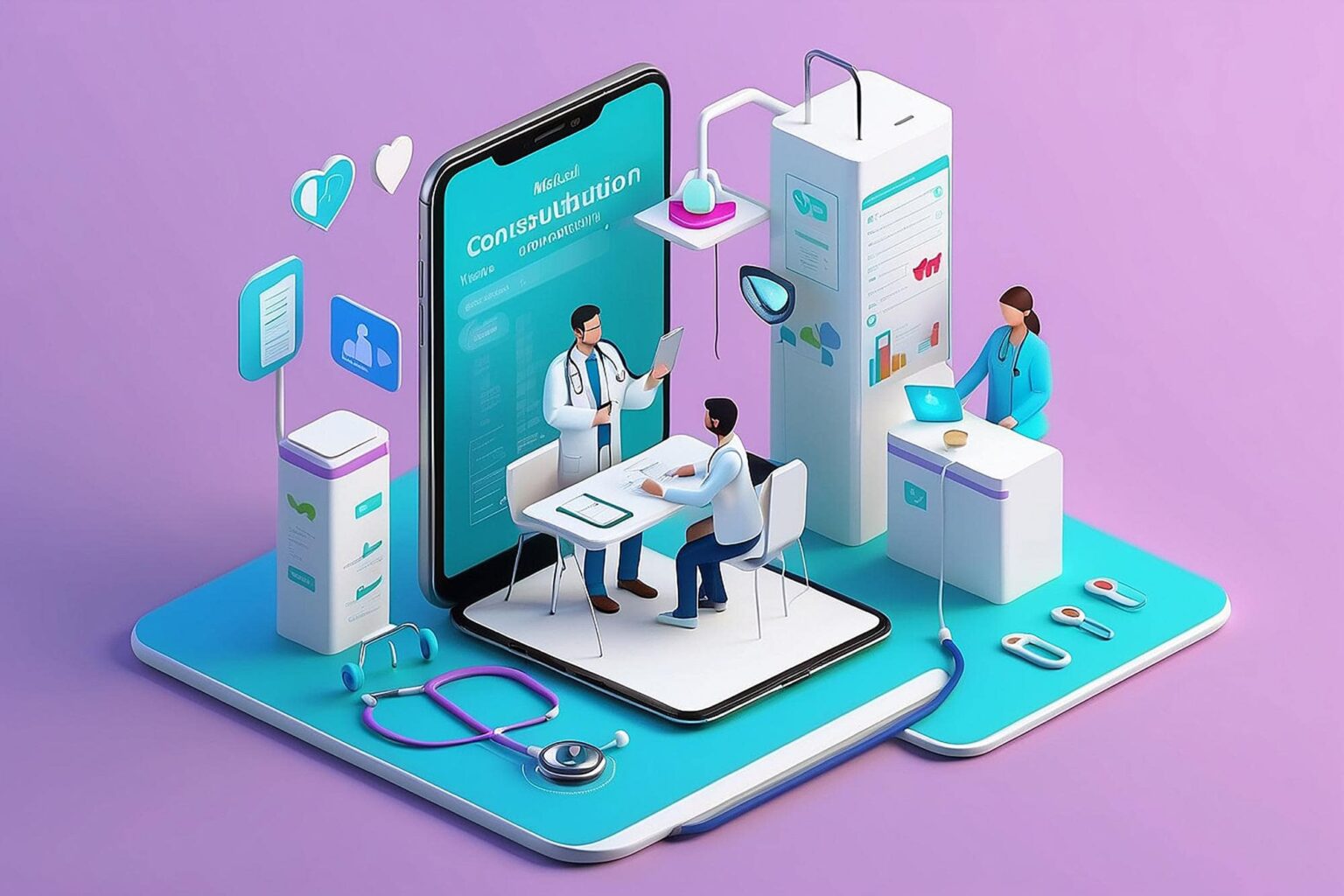5G connectivity in healthcare is poised to revolutionize telemedicine adoption, remote monitoring, and point-of-care diagnostics by leveraging ultra-fast, low-latency networks. Here’s how 5G is transforming healthcare:
Contents
Accelerating Telemedicine Adoption:
- High-Speed Connectivity: 5G networks offer significantly faster data transmission speeds compared to previous generations, enabling high-definition video conferencing, real-time image sharing, and seamless telemedicine consultations. Healthcare providers can conduct virtual visits with patients from any location, facilitating timely access to care.
- Low Latency: 5G networks reduce latency, or the delay in data transmission, to near real-time levels. Low latency enables smooth, uninterrupted telemedicine sessions with minimal lag or buffering, enhancing the quality and reliability of remote consultations.
- Remote Specialist Consultations: 5G-enabled telemedicine platforms connect patients with specialist physicians and healthcare experts regardless of geographical barriers. Remote consultations allow patients to access specialized care without the need for travel, reducing healthcare costs and improving healthcare access for underserved populations.
Enhancing Remote Monitoring:
- IoT Integration: 5G facilitates the integration of Internet of Things (IoT) devices for remote patient monitoring. Connected sensors, wearables, and medical devices transmit real-time health data over 5G networks, enabling continuous monitoring of vital signs, medication adherence, and disease progression.
- Continuous Data Streaming: With 5G’s high bandwidth capabilities, healthcare providers can receive continuous streams of patient data without interruptions. This enables proactive monitoring, early detection of health deterioration, and timely interventions to prevent adverse events or hospital readmissions.
- Home Healthcare: 5G enables advanced telemonitoring solutions for managing chronic conditions, post-acute care, and aging in place. Patients receive personalized care plans, remote monitoring support, and virtual consultations from healthcare providers, improving health outcomes and quality of life.
Advancing Point-of-Care Diagnostics:
- Remote Imaging: 5G enables remote access to medical imaging studies such as X-rays, MRIs, and CT scans with high resolution and minimal latency. Healthcare providers can review and interpret imaging studies in real time, leading to faster diagnosis and treatment decisions.
- Mobile Health Applications: Mobile health (mHealth) applications leverage 5G connectivity to perform point-of-care diagnostics, medical testing, and diagnostic imaging using smartphones or portable devices. 5G-enabled mHealth apps offer rapid access to diagnostic information, laboratory results, and medical records at the point of care.
- Augmented Reality (AR) and Virtual Reality (VR): 5G supports AR and VR applications for immersive medical training, surgical simulations, and anatomical visualization. Healthcare providers use AR/VR technologies for medical education, procedural planning, and patient education, enhancing clinical decision-making and patient outcomes.
Considerations and Challenges:
- Infrastructure Investment: Deploying 5G infrastructure in healthcare facilities requires significant investment in network upgrades, equipment installation, and regulatory compliance. Healthcare organizations collaborate with telecommunications providers and government agencies to ensure seamless integration of 5G technology.
- Data Security and Privacy: Securing patient data transmitted over 5G networks is essential to protect confidentiality, integrity, and privacy. Healthcare organizations implement encryption, access controls, and data encryption protocols to safeguard sensitive health information from unauthorized access or cyber threats.
- Interoperability: Ensuring interoperability among healthcare IT systems, medical devices, and 5G networks is critical for seamless data exchange and care coordination. Healthcare providers adopt interoperable standards, protocols, and application programming interfaces (APIs) to integrate 5G-enabled technologies into existing workflows.
- Regulatory Compliance: Healthcare organizations must comply with regulatory requirements such as HIPAA, GDPR, and FDA regulations when implementing 5G-enabled healthcare solutions. Adhering to regulatory standards ensures patient safety, data protection, and legal compliance in the use of 5G technology.
Future Directions:
- 5G-enabled Remote Surgery: Future advancements in 5G connectivity may enable remote surgical procedures, telesurgery, and robotic-assisted surgeries with ultra-low latency and high reliability. Surgeons can perform minimally invasive procedures remotely, leveraging haptic feedback and real-time imaging for precise surgical interventions.
- Edge Computing: Edge computing technologies complement 5G networks by processing and analyzing data closer to the point of care, reducing latency and bandwidth requirements. Edge computing facilitates real-time analytics, AI-driven decision support, and medical device integration in healthcare settings.
- 5G-enabled Healthcare Ecosystem: 5G networks create a connected healthcare ecosystem where patients, providers, and devices interact seamlessly to deliver personalized, accessible, and efficient healthcare services. Collaborative partnerships, innovation hubs, and pilot projects drive the adoption of 5G-enabled healthcare solutions and shape the future of digital health.
In summary, 5G connectivity accelerates telemedicine adoption, remote monitoring, and point-of-care diagnostics in healthcare by providing ultra-fast, low-latency networks. By leveraging 5G technology, healthcare organizations improve patient access to care, enhance clinical decision-making, and deliver high-quality healthcare services in an increasingly connected and digitalized healthcare landscape.



